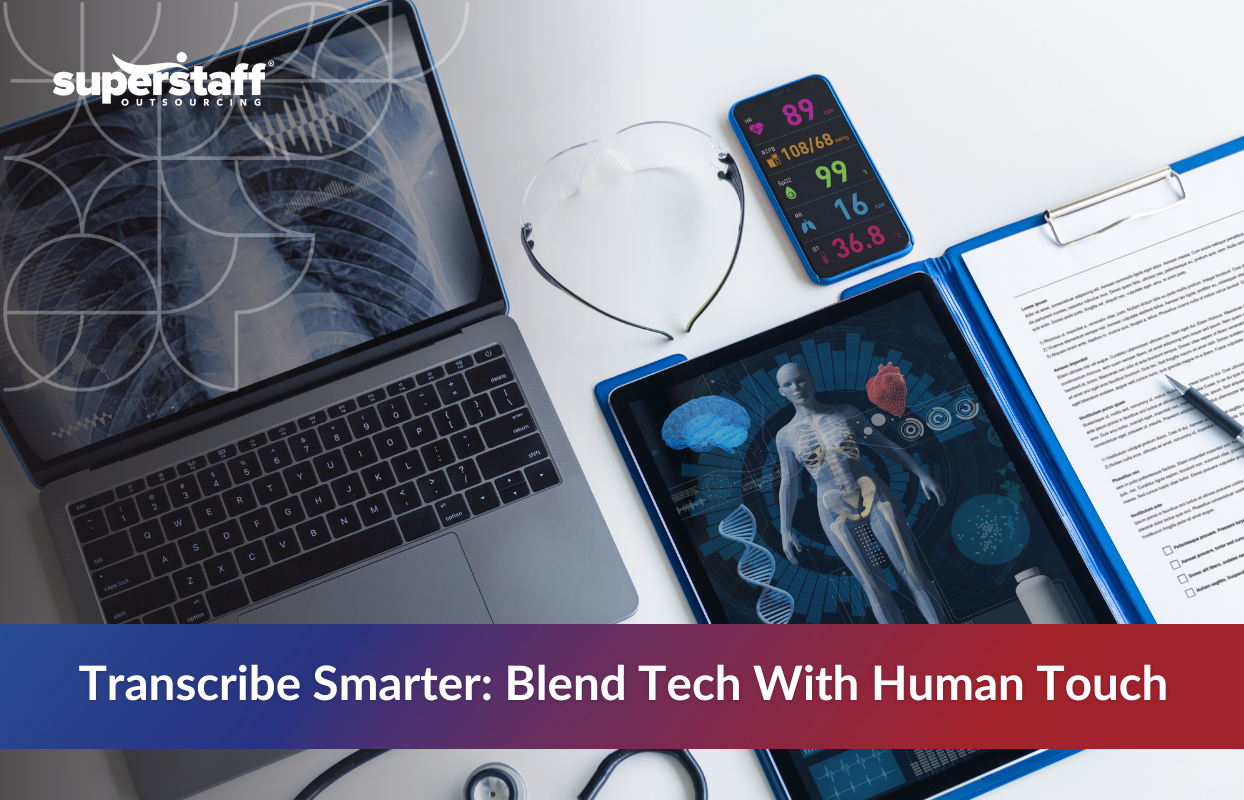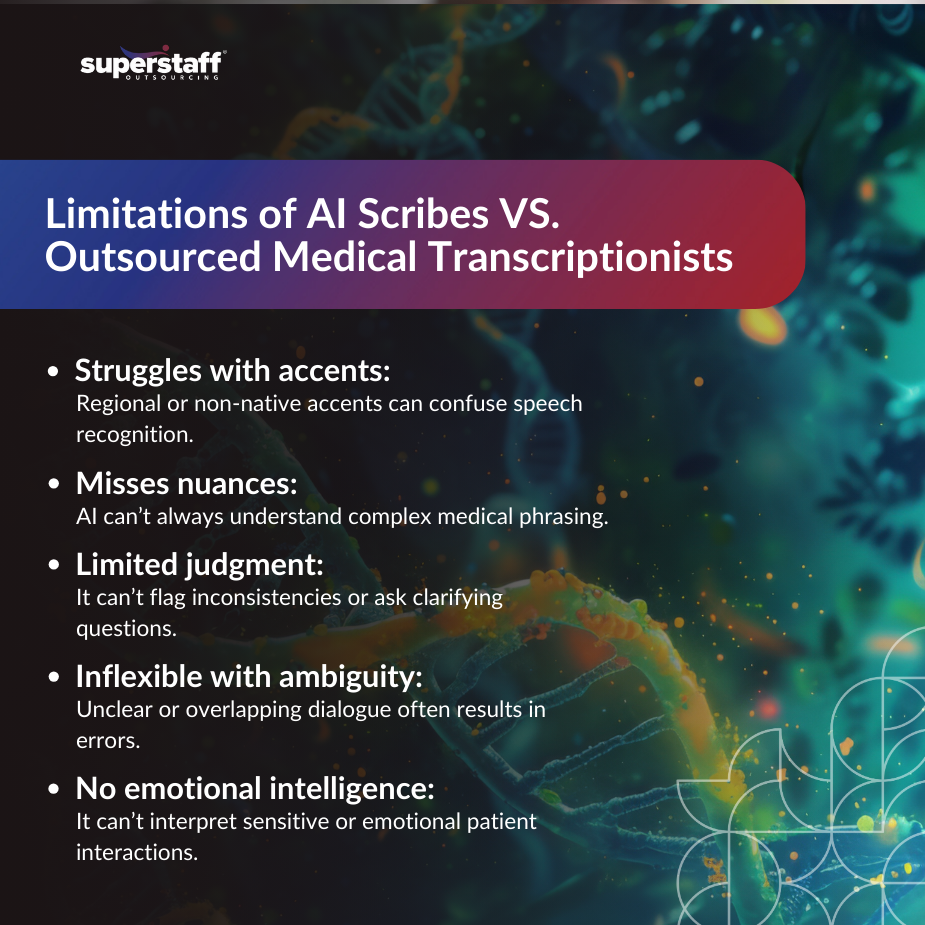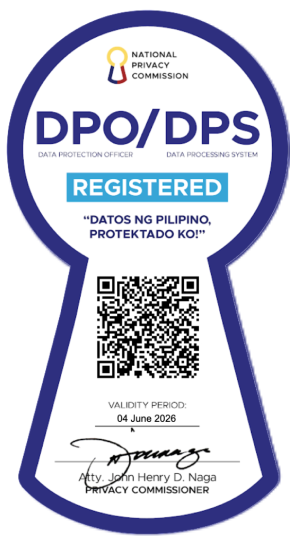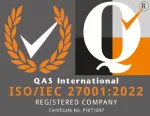
The rise of the best AI medical scribe tools has transformed how healthcare providers manage clinical documentation. From streamlining notes to reducing physicians’ administrative burdens, AI scribes are being hailed as the future of medical recordkeeping. But as artificial intelligence gains traction, a critical question arises: Do we still need human medical transcriptionists?
Medical transcription has come a long way—from handwritten notes and typed reports to sophisticated voice recognition and natural language processing (NLP) systems. Yet, even as automation improves speed and efficiency, it can fall short in capturing the whole picture. Precision, patient nuances, and clinical context often require the kind of judgment and empathy that only humans can provide.
While the best AI medical scribe can accelerate documentation and scale with growing patient volumes, human transcriptionists offer something irreplaceable: the ability to understand tone, flag discrepancies, and ensure compliance with privacy regulations like HIPAA. It’s not a matter of choosing one over the other—it’s about finding the right balance.
In this blog, we’ll discuss the strengths and limitations of AI scribes and outsourced medical transcriptionists and make the case for a blended model that leverages technology without losing the human connection at the heart of quality healthcare.
AI scribes streamline medical documentation but are not without risks.
AI scribes are revolutionizing the healthcare industry by significantly reducing documentation time. These tools use voice recognition and natural language processing (NLP) to capture clinician-patient conversations in real time and convert them into structured notes that integrate with Electronic Health Record (EHR) systems.
Healthcare automation solutions like AI scribes are now widely used across primary care and specialty practices, helping to reduce burnout and improve patient focus during appointments.
Benefits of AI Scribes:
- Real-time documentation boosts operational efficiency.
- Reduces clinician workload and administrative strain.
- Available 24/7 with minimal human intervention.
Challenges and Risks:
- Misinterpretation of medical jargon or nuanced speech.
- Lack of contextual understanding which can impact accuracy.
- Difficulty understanding accents or muffled audio.
- Inability to handle complex instructions or ambiguous phrasing.
These limitations make it clear that while AI can serve as a powerful assistant, it is insufficient as a standalone solution in high-stakes environments such as critical care or legal medical documentation.

Human medical transcriptionists offer depth that AI can’t replicate.
Understanding how AI scribes compare to human medical transcriptionists reveals a critical insight: while AI brings speed, humans bring depth and discernment. Human transcriptionists offer invaluable expertise in medical documentation that algorithms alone can’t replicate. They are extensively trained in medical terminology, healthcare procedures, and documentation standards, making them capable of producing highly accurate and contextually rich records.
Unlike AI scribes, who rely on voice recognition and predictive algorithms, human transcriptionists apply critical thinking, interpret nuanced conversations, and catch inconsistencies that machines may overlook.
Human-Centric Advantages:
- Handle unclear audio, regional dialects, and complex medical discussions more accurately.
- Understand tone, intent, and nuances, providing more comprehensive and reliable records.
- Can flag discrepancies, cross-check patient data, and ensure full regulatory compliance.
When evaluating how AI scribes compare to human medical transcriptionists, it’s clear that humans play a critical role in protecting patient safety and minimizing legal risk. Their discretion and contextual judgment uphold the integrity of medical documentation—something AI has yet to fully master.
However, relying solely on human transcription may limit scalability for fast-growing practices that require round-the-clock documentation.
Blending AI and human transcription support creates the most reliable system.
The future of healthcare documentation lies not in choosing between AI scribes and human transcriptionists, but in blending the strengths of both. AI can handle the initial documentation stages, while human professionals audit and refine the output.
This hybrid model is particularly effective when supported by a medical scribe virtual team that seamlessly combines AI-driven drafts with human-reviewed accuracy. It balances efficiency with reliability, giving providers the best of both worlds.
Advantages of a Blended Approach:
- Turnaround Time: Automation handles high-volume tasks quickly, while humans ensure accuracy through final review.
- Trust and Quality: Patients trust providers who document accurately; human oversight prevents harmful errors.
- Scalability: Allows healthcare providers to scale services without compromising on documentation quality.
By leveraging machine speed and human judgment through a medical scribe virtual model, healthcare organizations can meet operational goals while maintaining a high standard of patient care.
Outsourcing medical transcription offers flexibility and quality control at scale.
Medical transcription outsourcing has become a key strategy for healthcare providers aiming to streamline documentation without overextending internal resources. By partnering with global teams, organizations gain access to skilled professionals across time zones, ensuring 24/7 coverage. This model allows providers to remain focused on patient care while trusted external experts handle the heavy lifting of documentation.
A medical scribe virtual team can offer round-the-clock documentation support and adapt to each provider’s specific workflows, specialties, and compliance requirements—whether that means adjusting to different EHR systems or providing specialized support for high-volume departments like radiology or oncology.
Why Outsourcing Works:
- Seamless integration with EHR systems and AI transcription tools: Outsourced transcription teams are trained to work within the client’s existing tech stack. This ensures smooth collaboration between human scribes, AI-generated drafts, and clinical staff, minimizing disruption and maximizing efficiency.
- Support for multiple languages, accents, and regional medical practices: Global outsourcing partners bring multilingual capabilities and a familiarity with diverse patient populations, which is especially valuable for practices serving multicultural or international communities.
- Consistent quality with trained professionals following established protocols: Outsourced teams are equipped with ongoing training programs to stay updated on evolving healthcare regulations, medical terminology, and transcription standards, ensuring consistently accurate and reliable documentation.
- More cost-effective than maintaining a full-time, in-house team: Outsourcing eliminates the overhead of recruitment, training, equipment, and infrastructure. Providers only pay for what they use, making it easier to control costs and scale services up or down as needed.
Partners like SuperStaff specialize in compliance-driven workflows, ensuring that transcriptionists understand the nuances of HIPAA, HL7, and other healthcare standards. This focus on data security, accuracy, and confidentiality offers peace of mind to healthcare leaders looking to balance patient privacy with operational efficiency.
With outsourcing, healthcare providers can scale their documentation operations while maintaining control, flexibility, and quality assurance—a critical advantage in today’s fast-evolving healthcare environment.
SuperStaff empowers providers through customizable, tech-enabled transcription solutions.
SuperStaff bridges the gap between automation and human expertise by offering tailored transcription services that integrate seamlessly with healthcare automation solutions.
Our vetted workforce is trained in medical transcription protocols and adept at working with AI-generated drafts to enhance accuracy and clarity.
What SuperStaff Offers:
- Solutions designed around individual workflows, EHR systems, and documentation preferences
- Scalable teams of medical scribe virtual professionals ready to support round-the-clock documentation
- Deep knowledge of compliance frameworks like HIPAA and HL7
Whether you need full-service transcription or hybrid support to review AI-generated notes, SuperStaff provides the agility, quality, and trust you need to keep patient care at the forefront.
Why the Best AI Medical Scribe Still Needs a Human Touch
AI scribes can’t replace the nuance and judgment of human transcriptionists—but together, they form a powerful partnership. While AI scribes provide real-time efficiency and scalability, human transcriptionists offer contextual understanding and regulatory precision.
To get the best of both worlds, turn to SuperStaff for specialty healthcare outsourcing. Our professional team ensures operational continuity, cost savings, and 24/7 support.
In the evolving world of healthcare documentation, the best results come from balancing innovation with the human touch. Contact us today to learn how SuperStaff can help your healthcare organization build a secure, efficient, and patient-focused transcription process.






